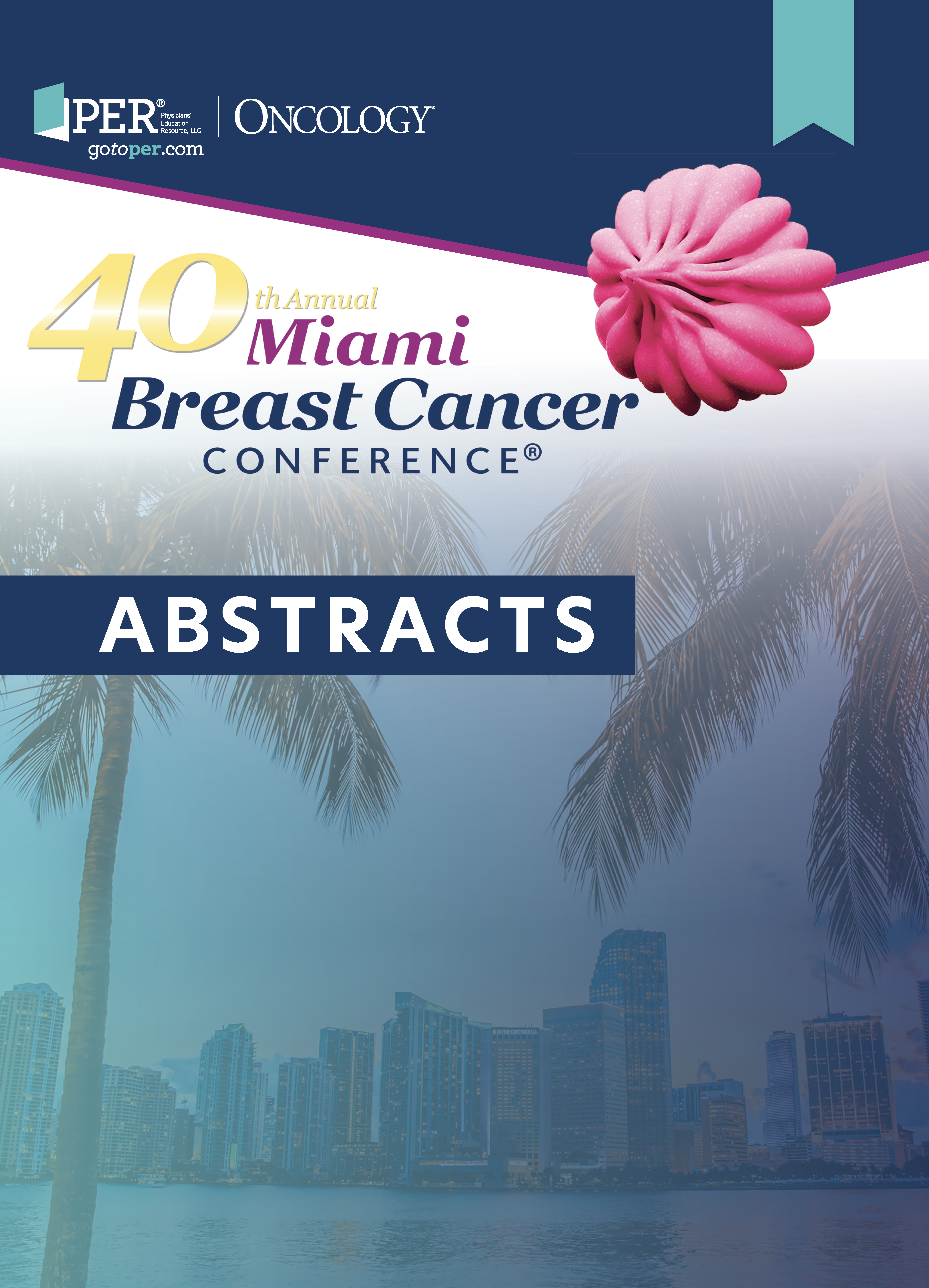1 Elacestrant Versus Fulvestrant or Aromatase Inhibitor in a Phase 3 Trial Evaluating Elacestrant, an Oral Selective Estrogen Receptor Degrader Versus Standard-of- Care Endocrine Monotherapy for ER+/HER2– Advanced/Metastatic Breast Cancer
Background
Elacestrant is a novel, oral selective estrogen receptor degrader (SERD). The phase 3 EMERALD trial compared the efficacy and safety of elacestrant to standard-of-care (SOC) endocrine therapy of investigator’s choice (fulvestrant or aromatase inhibitor [AI]) in patients with ER+/HER2– locally advanced or metastatic breast cancer (mBC) following progression on prior endocrine and cyclin-dependent kinase 4/6 inhibitor (CDK4/6i) therapy. Elacestrant demonstrated significantly prolonged progression-free survival (PFS) compared to SOC in all patients and in patients whose tumors harbored ESR1 mutations (ESR1-mut). Here, we report a post-hoc subgroup analysis from EMERALD separately comparing the efficacy of elacestrant to fulvestrant and to AI.
Materials and Methods
EMERALD (NCT03778931) is a randomized, open-label, phase 3 trial. Patients were randomized 1:1 to elacestrant (400 mg orally daily) or SOC consisting of investigator’s choice of fulvestrant or AI. For the SOC arm, the protocol provided the following guidance regarding therapy selection:
- Patients who have not previously received fulvestrant should be treated with fulvestrant.
- Patients who have progressed on prior fulvestrant therapy should be treated with an AI.
- The selection of an AI should be based on prior AI therapy and any known contraindications.
- If the patient has previously progressed on a non-steroidal AI (anastrozole or letrozole) but has not received exemestane, the preferred option would be exemestane.
- If the patient has previously progressed on exemestane but has not received a nonsteroidal AI, the preferred option would be a nonsteroidal AI.
Results
Of 477 patients enrolled in the trial:
- n = 239 received elacestrant, n = 238 received SOC.
- n = 165 (69%) received fulvestrant (159 patients were pretreated with AI).
- n = 73 (31%) received AI (69 patients were pretreated with fulvestrant).
Baseline characteristics were balanced between the elacestrant and SOC groups. CDK4/6i are frequently combined with AI in the 1st-line ER+/HER2– mBC setting; therefore, patient disposition showing more fulvestrant (69%) vs AI (31%) in EMERALD reflects the real-life setting and that the therapy selection guidance in the protocol was followed by the sites. A greater proportion of AI-treated patients had received 2 prior endocrine therapies (71.2%) vs fulvestrant-treated patients (27.3%).
Conclusions
Elacestrant demonstrated statistically significant and clinically meaningful improvement in PFS vs SOC endocrine therapy in a randomized global phase 3 study in patients with ER+/HER2- mBC in the 2nd/3rd-line post-CDK4/6i setting. The sequencing guidance provided in the protocol regarding the selection of therapy in the control arm represents real-world therapeutic strategy for patients with ER+/HER2- mBC in the 2nd/3rd-line post-CDK4/6i setting. In this post hoc subgroup analysis, elacestrant improved PFS compared with fulvestrant as well as AI consistently at 6, 12, and 18 months, highlighting a superior efficacy of elacestrant regardless of the type of endocrine therapy. Elacestrant has a predictable and manageable safety profile consistent with other endocrine therapies.
AFFILIATIONS:
Philippe Aftimos,1 Javier Cortes,2 Francois Clement Bidard,3 Virginia Kaklamani,4 Aditya Bardia,5 Alberto J. Montero,6 Joo Hyuk Sohn,7 Giulia Tonini,8 Krzysztof J. Grzegorzewski,9 Patrick Neven10
1Institut Jules Bordet – Université Libre de Bruxelles, Brussels, Belgium.
2International Breast Cancer Center (IBCC), Quiron Group, Barcelona Spain.
3Instit Curie, Paris and Saint Cloud, France.
4University of Texas Health Sciences Center, Houston, TX.
5Massachusetts General Hospital Cancer Center, Harvard Medical School, Boston, MA.
6University Hospitals Seidman Cancer Center – Case Western Reserve University, Cleveland, OH.
7Yonsei Cancer Center, Yonsei University Health System – Medical Oncology, Seoul, Republic of Korea.
8Menarini Group, Florence, Italy.
9Stemline Therapeutics/Menarini Group, New York, NY.
10Universitaire Ziekenhuizen (UZ) – Leuven Cancer Institute, Leuven, Belgium.

Newsletter
Stay up to date on recent advances in the multidisciplinary approach to cancer.